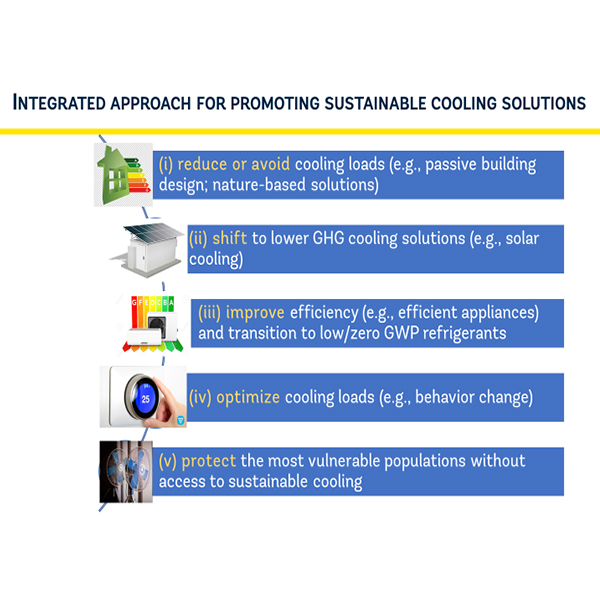
ESMAP’s Efficient and Clean Cooling program helps address key sustainable development challenges of providing access to cooling while minimizing negative climate impacts, with the aim of accelerating the uptake of sustainable cooling solutions across sectors (e.g., buildings, healthcare, agriculture, and fisheries). The initiative seeks to help countries develop the necessary market infrastructure, financing mechanisms, and policies and regulations to deploy sustainable cooling at scale, focusing on space cooling and green/cool surfaces (including passive cooling strategies in the built environment, cooling equipment and systems; building automation and controls, as well as solar and vegetative roofs and walls ); refrigeration, cold chains and logistics (including refrigeration, storage and distribution activities), as well as cooling needs in transport, and mitigation of urban heat island effects.
The initiative provides technical assistance to support the inclusion of efficient, clean cooling in World Bank Group policy dialogues, including in the context of countries’ climate change Nationally Determined Contributions and sectoral strategies, investment projects, and countries’ responses to the COVID-19 crisis. The Efficient, Clean Cooling program also generates knowledge and facilitates knowledge exchanges to further expand the reach of the sustainable cooling agenda, and actively engages in efforts to mobilize additional financing to support the scale-up of affordable sustainable cooling solutions.
Another important area of focus is the collaboration with public, private, non-governmental, and philanthropic partners to help raise awareness around efficient, clean cooling opportunities in emerging markets.
The Efficient, Clean Cooling Initiative was established in 2019 thanks to an initial US$3 million grant to ESMAP from the Clean Cooling Collaborative (formerly the Kigali Cooling Efficiency Program K-CEP), a philanthropic initiative housed within the ClimateWorks Foundation, focused on super-efficient refrigeration and space cooling equipment, climate-friendly refrigerants, passive cooling, and integrated solutions that cool people and the planet.







